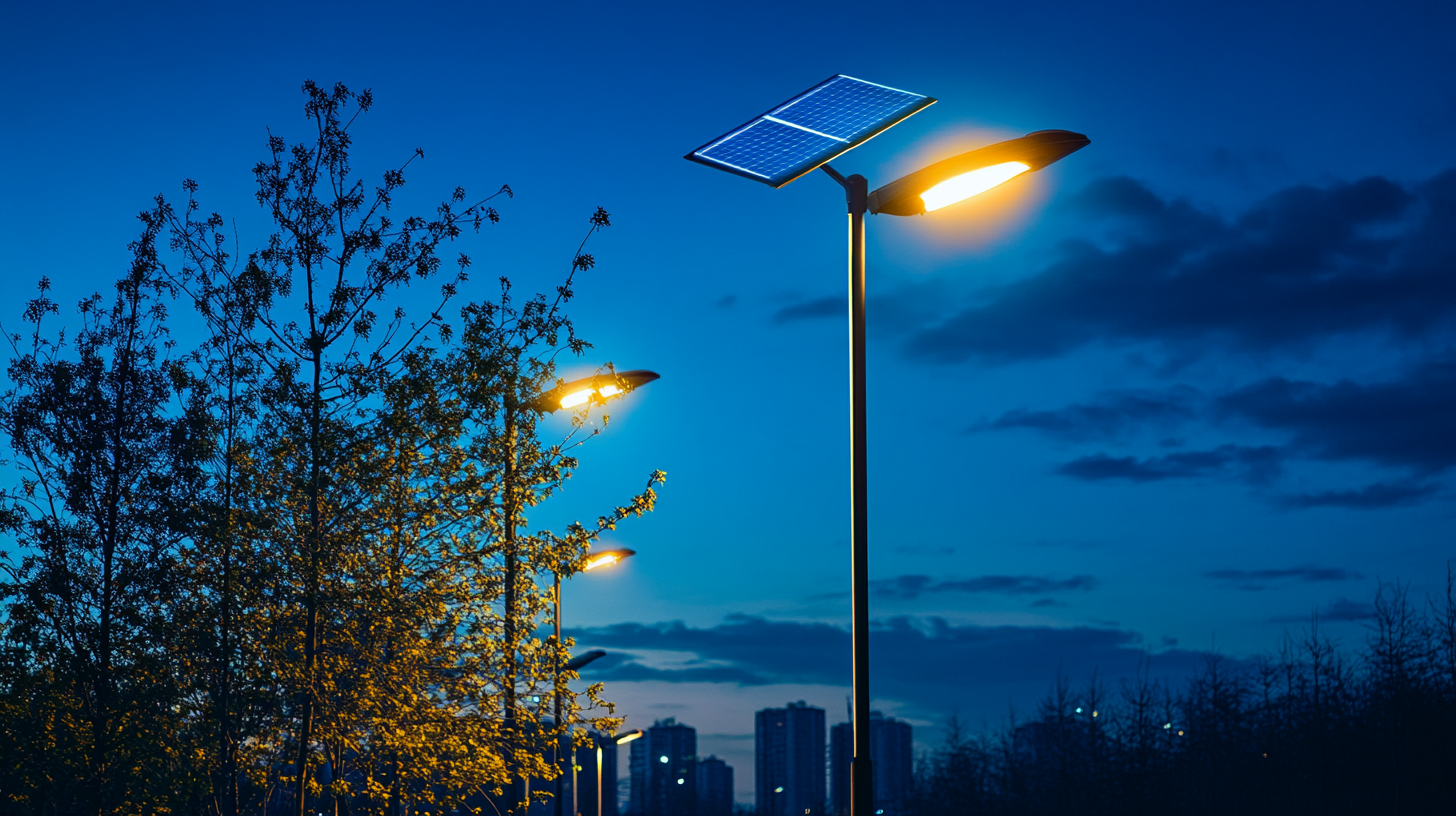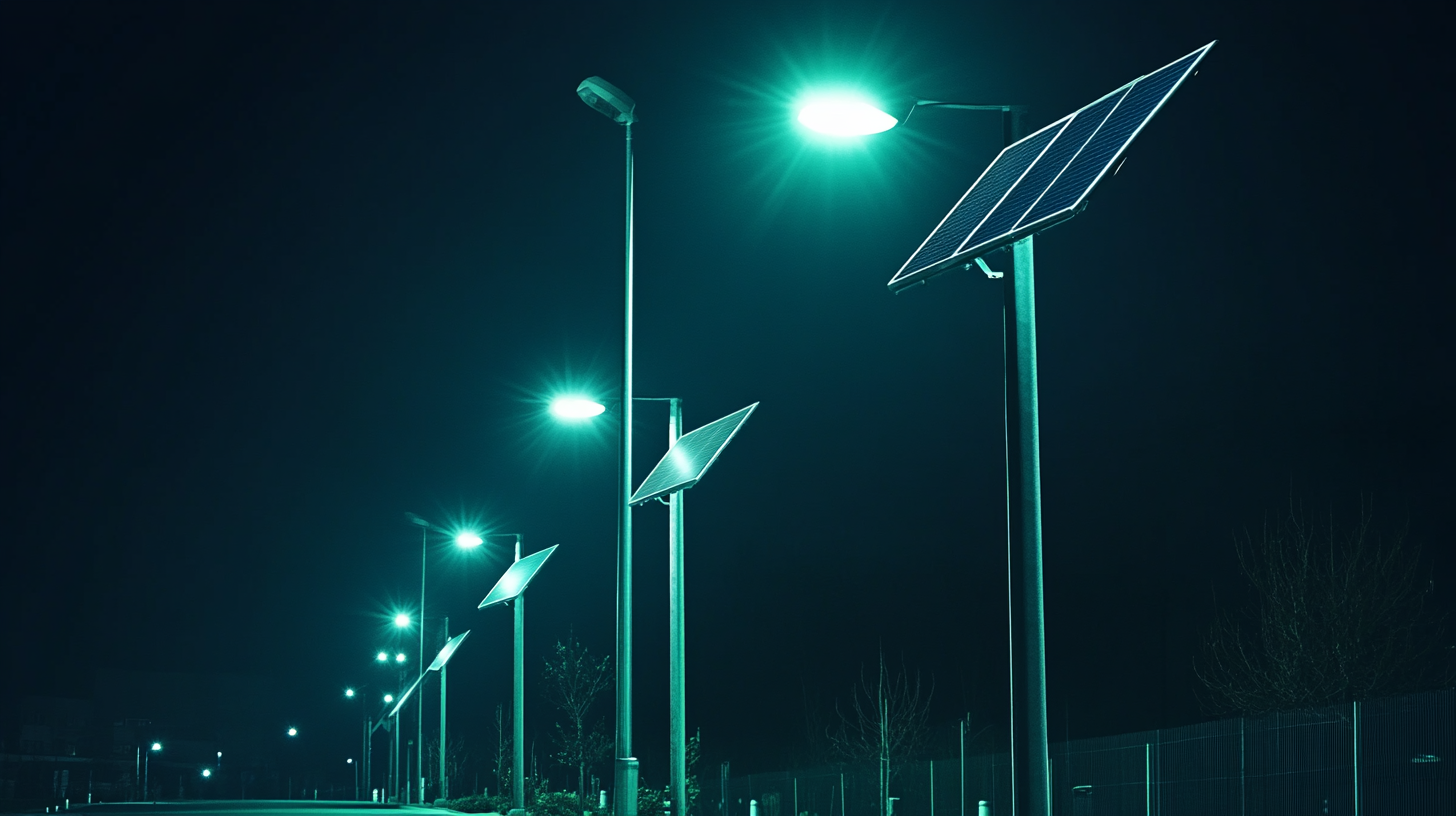Global Market Trends in Solar Parking Lot Lights by 2025: Insights and Case Studies
With the global energy landscape shifting toward sustainability, solar lights for parking lots appear to be a valuable tool that conforms to the environmental agenda and uplifts urban infrastructure. The MarketsandMarkets report states that, by 2025, the global solar light market will reach USD 6.5 billion, growing from USD 3.5 billion in 2020, representing a compound annual growth rate (CAGR) of 13.5%. Most of this growth is due to increasing demands for cheap and sustainable lighting solutions, especially in the commercial and public areas where solar park lights can help save electricity costs and carbon footprints substantially.
Various case studies from urban developments offer more practical insights into the benefits of solar park lighting. In the City of Los Angeles, unit solar lights were installed in various parking structures, achieving energy savings of approximately 75% as compared with conventional lighting. This trend is expected to gain momentum as solar technology advances and the climate issue continues to circulate around the globe. Thus, this blog is intended to discuss current market trends for solar parking lot lights, focusing on important findings and real-life applications of the technology that may help redefine urban lighting by 2025.

Emerging Technologies Shaping Solar Parking Lot Light Solutions by 2025
The solar parking lot lights are evolving rapidly, newly enhanced through technology aimed at improving sustainability and efficiency in urban settings. As cities across the world-from New York to Greater Phoenix-begin to embrace greener alternatives, the phenomenon of erecting solar canopies over parking lots has begun gaining momentum. This not only makes good use of the limited available space in urban areas but also drastically cuts down on carbon footprints by promoting renewable energies. Emerging technologies in solar light are making systems more efficient and economically viable. For example, the advances in solar panel design and energy storage solutions are improving the performance of solar parking lot lights, permitting greater energy generation and storage even in less-than-ideal weather conditions. Further, the sensor-driven smart lighting systems can optimize energy consumption by controlling brightness levels according to occupancy and environmental factors. Zoning laws and grants are also being implemented for this cause in cities. The recent move of New York City to set aside 8,500 acres of parking lots for solar canopies is an example of how changes in zoning laws can spur market implementation. As the various stakeholders-from government to private businesses-begin to appreciate the magnitude of benefits accruing to solar parking lot lights in terms of savings in dollars and environmental value, by 2025 the visitation setting will drastically be changed as it makes way for a cleaner and greener future.

Market Drivers: Sustainability, Cost Savings, and Government Incentives
Across markets, the arrangement is changing towards sustainability: solar parking-lot lights, too, have not remained untouched. ESG considerations are the most significant driver behind this transformative outlook. For companies to improve their global footprint, the very understanding of ESG principles must become paramount, especially for the Chinese companies going overseas. These companies are starting to be proactive: they are now turning sustainability compliance into innovation.
A major driving force for the solar parking lot light market is immediate cost savings with solar energy implementation. Reducing reliance on conventional energy sources means that businesses can pay lower utility bills and improve their contribution to a greener world. Government incentives for the use of solar technology provide ample stimulus for making this choice. Programs and tax benefits for companies switching to sustainable solutions act as catalysts that encourage greater investment in solar infrastructure, primarily for outdoor lighting solutions.
Through integrating solar parking lot lights, firms undertake an active commitment to sustainability and establish a path toward meeting broader ESG objectives. In their pursuit of developing eco-friendly practices to meet consumer demands, organizations are realizing that any innovation enhancing product or service and its supporting internal processes will contribute to their brand image and long-term health. Ultimately, the case studies evolving from this sector demonstrate how the combination of cost savings and government support is changing market trends in sustainable energy solutions and will result in their wide adoption by 2025.

Key Regional Markets: Growth Opportunities in North America, Europe, and Asia
By 2025, the solar parking lot lights market is likely to witness rapid growth opportunities, with exciting opportunities in regions such as North America, Europe, and Asia. Solar lighting systems find a growing place in urban strategies focused on promoting renewable energy, mainly due to being cost-efficient and offering sustainability benefits. Thus, while reducing carbon footprints, municipalities and businesses may also save on traditional lighting operational costs by utilizing solar energy.
In North America, the trend is expected to be spearheaded by government incentives and increasing demands for sustainable practices across the entire public and private sectors. States that have in place policies favoring energy-efficient constructions may now be likely to adopt solar lighting solutions for parking lots, thereby improving safety and accessibility to public venues. On the other hand, Europe has witnessed accelerating adoption of solar technology aligned with broader climate action goals, incorporating innovation in design and smart technology features on their lighting systems.
Asia is witnessing rapid maturing owing to investments on infrastructural projects and energy-efficient technologies. Countries like China and India are advocating sustainable urbanization which directly supports the growth of solar lighting in parking applications. Together, these regions are catalyzing a transformation of public space illumination with green technology.

Case Studies: Successful Implementations in Urban and Rural Parking Environments
New trends have emerged with cities aiming for sustainability and energy-efficient promoters, such as solar parking lot lights. In one such successful implementation to urban environments where modern design meets innovative technologies is last bright lifted in California, which previously transformed downtown parking with smart solar lighting systems. The system uses solar panels directly coupled with LED technology; thus, brightness is adapted fully automatically based on the ambience and use of the parking lot. This would not just reduce energy consumption but also contribute to higher security and visibilityーas well as male involvement in a safer and more secure environment.
Rural setups have equally greatly changed. A case study and example are from a rural community in Texas, showing how solar parking lot lights serve areas that are more open with a lesser population density. Solar lights are mounted at the event parking lots of the community, lighting the areas during occasions that are held at the local parks. Improved access and safety are just some of the benefits that this project has accomplished. It did much more in demonstrating the commitment of the community to renewables, by showing a noticeable reduction in electricity costs at the local government level and creating a source of pride for the community with the improved public facilities.
These studies can be great examples of how solar parking lights dramatically change daily life in urban and rural environments. As communities-in-the-making around the world undeniably seek smarter, greener solutions for today, there will also come a time when solar technology becomes increasingly necessary as a feature of public infrastructure, bringing the future closer to energy-efficient and environmentally responsible advancement.
Future Innovations: What to Expect in Solar Lighting Technologies and Designs
As urban areas seek sustainable solutions for their infrastructure, the solar parking lot lights function as a key innovation in solar lighting technologies. The year 2025 will witness major advances in design and functionalities with a paradigm shift in the way these systems are deployed. Solar panel technology development will result in enhanced energy efficiency through better performance in low-light conditions. The introduction of bi-facial solar panels that seize sunlight from both sides to maximize energy output and reduce the carbon footprint of parking lots across the globe will be highly expected.
Smart technology will prove to be another crucial aspect in the enhancement of solar parking lot lights in the beginning. Integration of IoT capabilities provides real-time monitoring and data collection, allowing the facility manager to check remotely the energy consumption, battery status, and operational efficiencies. These types of innovation not only mean cost savings, but also add an extra layer of safety whereby lights are controlled in terms of brightness according to motion sensors or user commands.
Aesthetics will also become a focal point as the manufacturers aim to develop sleek, subtle installations that merge with the urban landscape. New advances include modular designs that allow for quick upgrades and scalability that can cater to both the needs of these small businesses and larger commercial parking facilities. With approaching 2025, the compromise between green and good-looking will surely tilt the paradigm of parking lot lighting, making it an integral ingredient of the recipe for modern eco-conscious city planning.
